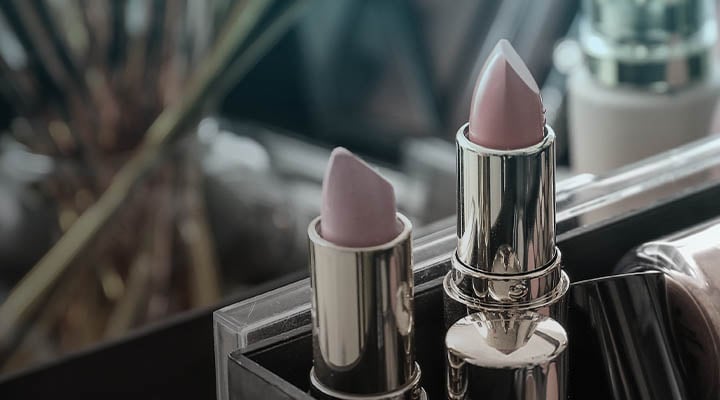There’s no doubt that 2020 will be remembered. If there is something everyone can agree on, it is how the power of social media has been able to unite humanity this year across multiple issues; such as the protection of the environment, and equal rights. This growing social media usage has also enabled businesses to market and advertise like never before. However, their approach has had to shift to demonstrate their social and economic awareness during these challenging times.
Trends previously showcased on TikTok and Instagram have evolved to be more sensitive and conscious in a post-COVID-19 world. For example, Huda Kattan has started to provide more tutorials on her YouTube channel instead of purely pushing expensive products. Beauty brands have also been held accountable and challenged in terms of their diversity and offering. In this article, we’ll look forward to the renew stage of recovery and discuss the ‘new’ trends which we have seen arise as a result of the last few months and whether they truly are ‘new’. We’ll also look at what beauty brands should be focusing on as they regroup and renew their approach to the market.
The end of colour cosmetics?
Colour cosmetics have generally been declining over the past few years due to the shift in preference to a more ‘natural look’. However, with our shift to remote working and the number of video conferences climbing, consumers still want to look after their appearance, therefore there is still a demand for skincare and ‘perfecting’ products such as concealers, bronzers and brow products. With the shift to pure online shopping too, consumers have been warier about trying new products due to not being able to try them out before purchasing. So, what does this mean for the future of colour cosmetics?
It’s hard to predict but looking at the overall trend for the past few years, I believe we will see less of a demand for colour cosmetics (which may now be accelerated due to Covid-19). Because of this, brands should continue to identify synergies between colour cosmetics and skincare, such as BB Cream. Beauty brands should also continue to encourage purchases to be concentrated through their own website, rather than through third-party retailers. This will not only benefit their direct revenue numbers but also help them gather data directly from their consumers on their colour cosmetics preferences and purchasing habits. This could then be used to further help beauty brands focus their attention, review their product ranges and identify high-value and high-priority initiatives to innovate and make real progress. That being said, brands have also looked at alternative sales channels to help market their products. Livestreaming seems to be a popular choice for brands as it offers a closed-loop for in-app purchases, empowers sales-associates to demonstrate products safely and enables higher transactions seamlessly. LazLive, which belongs to Alibaba Group’s SEA Arm has grown in popularity within South East Asia. The group reported that it saw a 45% increase in total gross merchandise value month on month. Colour cosmetic brands such as Shiseido and Bobbi Brown have been quick to adopt this new sales channel due to it bringing in a high engagement rate and reducing the need for people to come into their stores. It has also allowed their employees to become micro-influencers and provide a richer experience for the consumer.
Diversity
The beauty industry is finally starting to listen about the need for diversity in terms of black leadership, employees, models, influencers and colour ranges. Brands have regularly been questioned about their true diversity values with consumers now regularly seeing straight through superficial marketing campaigns. After coming under fire, conglomerate L'Oréal has reinstated black transgender activist and influencer Munroe Bergdorf into their new UK diversity and inclusion advisory board. The hashtag #pulluporshutup also started trending on Instagram, prompting beauty brands to come forward and take accountability for the make-up of their organisations. As a result, many brands have outlined action plans on their hiring process, in-house education and have made donations to charitable, action-oriented causes. For example, Glossier launched a grant initiative for black-owned beauty businesses which has been widely praised as it shows that they are truly bought into changing the industry for the better.
Brands now need to take further accountability for their previous actions and proactively demonstrate that they are working with and contributing to the community to defeat the systematic racism which exists within the beauty industry. To do this, brands need to start reflecting on their internal operating model and whether it is truly reflective of the society we live in. Education must come from within and racism should be openly spoken about with employees. This will help the beauty industry be more thoughtful when it comes to launching products and help them consider whether they are for all. From building the change within and offering a wide range of colours and products for their consumers, they will truly reflect an organisation with strong values and build a loyal community which is ever-so more important post-COVID-19.
Clean and safe beauty
Before the Covid-19 outbreak, consumers were shifting their purchase preferences towards clean beauty products which are non-toxic and have minimal impact on the environment. However, due to the pandemic, consumers have been exposed to a different type of risk and are now demanding more transparency and clarity on safety and security. Technology, such as blockchain could be a very effective technology in this space and could be used to enable enhanced supply chain visibility and help articulate to consumers where the product has come from. For example, if a product has been handled by someone who has been infected, the brand and retailer will need to quickly understand this issue and mitigate all potential impacts safely. Beauty brands and retailers will be able to leverage this information to know how long to quarantine products before putting them on their shelves to sell. Getting this process right will be the key to maintain in-store efficiency in the new physical environment.
The choice of ingredients in products has come under increasing scrutiny in the last few years and will continue to do so with the potential return to preservatives. However, there have been some concerns expressed about this as the clean beauty movement has helped the industry move forward and this will definitely be seen as a step backwards. Therefore, I expect to see more investment in biotech as brands look for new ways to develop organic preservatives which offer microbial coverage. In addition to the ingredients, beauty brands will also need to review their products’ packaging. To remain competitive and support customers who want to be extra careful during these uncertain times, brands will need to substitute their jars with safer packaging options like spray glass bottles and pumps, whilst staying true to their sustainable agenda.
A rocky future
The beauty industry will never be the same again, however, the trends I have discussed in this article were already emerging before Covid-19. Therefore, it could be argued that Covid-19 has simply accelerated the much-needed change which consumers have demanded from the beauty industry for some time. It is hard to imagine what will happen in the second half of 2020, but it will be intriguing to see if these trends will further evolve and how they will contribute to beauty brands’ sales strategy. As cities and stores start to reopen, beauty retailers will be carefully watched to ensure that they are remaining cautious and serving their customers with safety in mind. With the fear of a second wave of Covid-19 and a potential recession in the back of consumers’ minds, behaviours will have changed and will need to be carefully considered. To support a successful launch, brands should share their renewed value and ethos honestly, consumers are more likely to spend where they feel an emotional connection and an affiliation to a brand. This will not only benefit bottom lines but also increase loyalty which is maximum importance in the post-Covid-19 world.
Published
April 29, 2024Reading time
5 minutesRelated posts





